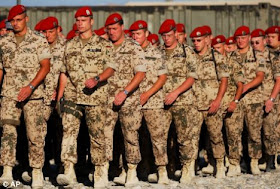China on Thursday dismissed claims that its carrier-based fighter jets plagiarized foreign models and would make Beijing more assertive in tackling maritime disputes with neighbors.
It is at least unprofessional, if not an intentional attack, to claim China copied foreign aircraft carrier technology through a simple comparison since the laws for military development are objective, and the principles of building military equipment, the command and safeguard methods are similar, Ministry of National Defense spokesman Geng Yansheng said at a regular news conference.
Geng made the remarks in response to reports that the carrier-borne J-15 fighter jet, which made its debut in a landing and take-off exercise on China's first aircraft carrier the Liaoning on Saturday, is a Chinese adaptation of the naval version of Russia's Su-33.
"China adheres to self-dependent scientific innovation. We have sufficient know-how and capability to build and develop our own aircraft carrier," Geng said.
It is true that China used to rely heavily on imported Russian military equipment to modernize its troops, but people should not use that as an excuse to criticize Chinese people who have made tough endeavors and even sacrifices in developing the J-15's engine, fire-control system, electronics system and other key components, said the Xinhua News Agency.
Guo Xiaobing, deputy chief of the Institute of Security and Arms Control Studies under the China Institutes of Contemporary International Relations, said the "crime of plagiarism" is a severe insult to Chinese researchers including Luo Yang, head of the production phase of the J-15 who died on Sunday of a heart attack during the carrier's voyage return to base after the planes' landing exercise.
Geng said the J-15, which is still conducting related experiments and training, would equip the army in accordance with the military's schedule. Experts said it will be a while before the Liaoning can be put into operation.




























